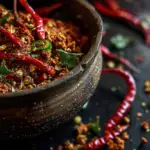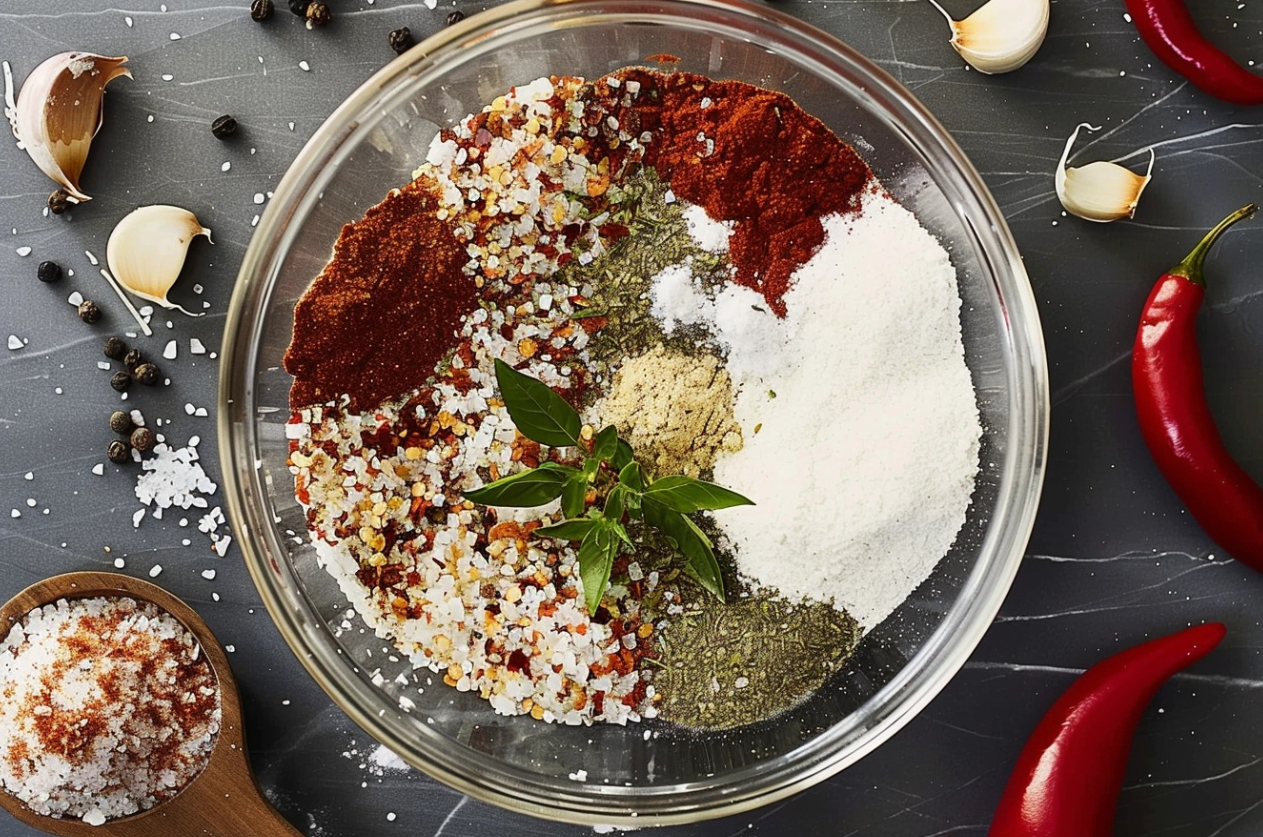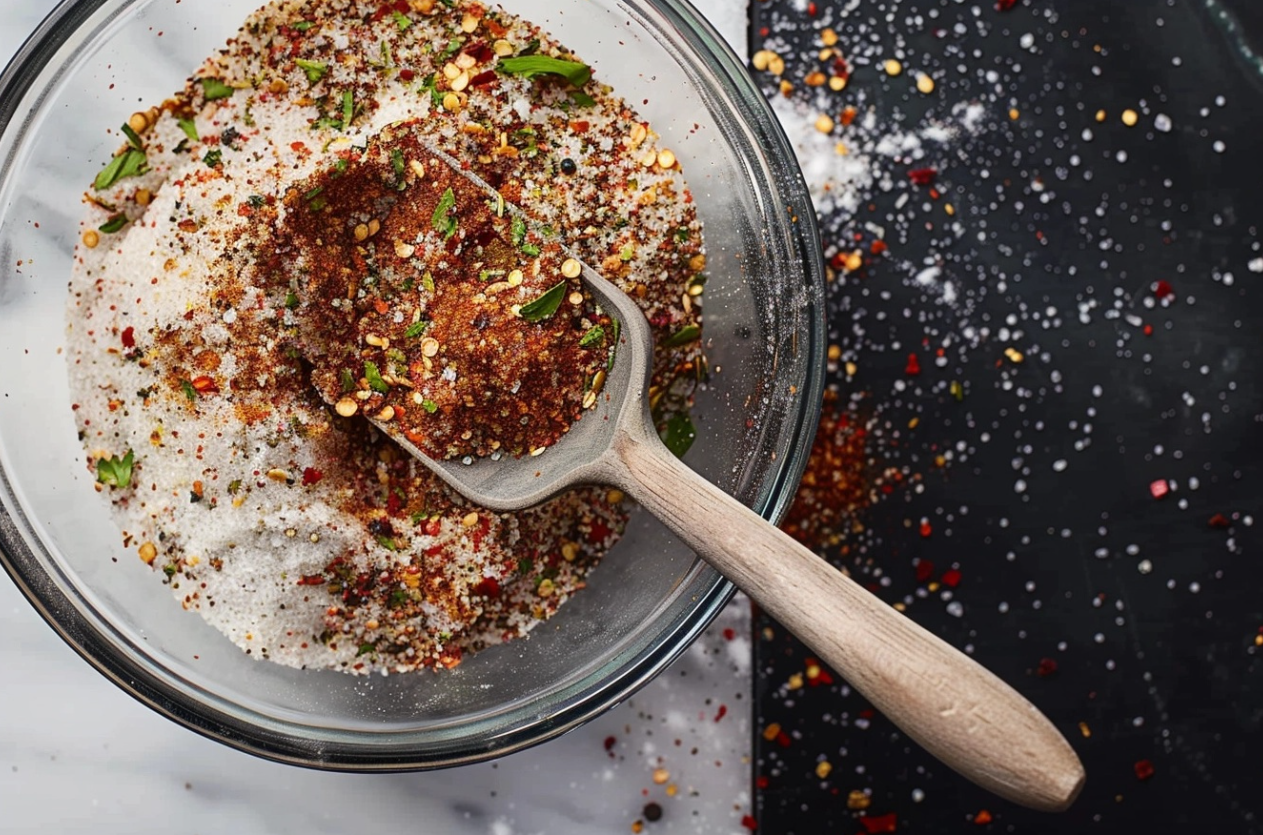Advanced Techniques and Variations
Experimenting with Flavors
Enhancing your chili seasoning recipe involves experimenting with different spices and herbs. Introduce a smoky dimension by infusing smoked paprika or chipotle powder. For enthusiasts of fiery zest, contemplate the inclusion of cayenne pepper or crushed red pepper flakes. Adding a touch of cocoa powder can create a deeper, richer flavor profile. Don’t hesitate to try variations based on regional cuisines, such as Mexican, Tex-Mex, or Indian influences.
Cooking Techniques
Mastering various cooking techniques can elevate your chili seasoning blend. For instance, roasting your chili peppers before grinding can intensify their flavor. Toasting whole spices like cumin seeds and coriander seeds in a dry skillet before grinding them can also bring out their aromatic oils, adding complexity to your seasoning mix. Grinding your own spices ensures freshness and allows for customization.
Another technique is blooming spices, which involves briefly cooking the chili seasoning in hot oil to release its essential oils. This approach markedly enriches the complexity and savor of your culinary endeavors. Moreover, blending fresh ingredients like garlic and onions into a paste with your chili seasoning can create a vibrant and aromatic base for soups, stews, and marinades.
Regional Variations
Various locales offer their distinct interpretations of chili seasoning. In Mexico, blends might include ancho or guajillo chilies for a milder heat. Indian chili powders often combine dried red chilies with other spices like turmeric and fenugreek. Exploring these regional differences can inspire new and exciting uses for your homemade chili seasoning.
By experimenting with flavors, mastering cooking techniques, and exploring regional variations, you can create a chili seasoning mix that is uniquely yours. This personalized approach not only enhances your dishes but also adds a creative touch to your culinary repertoire. Discover more advanced recipes
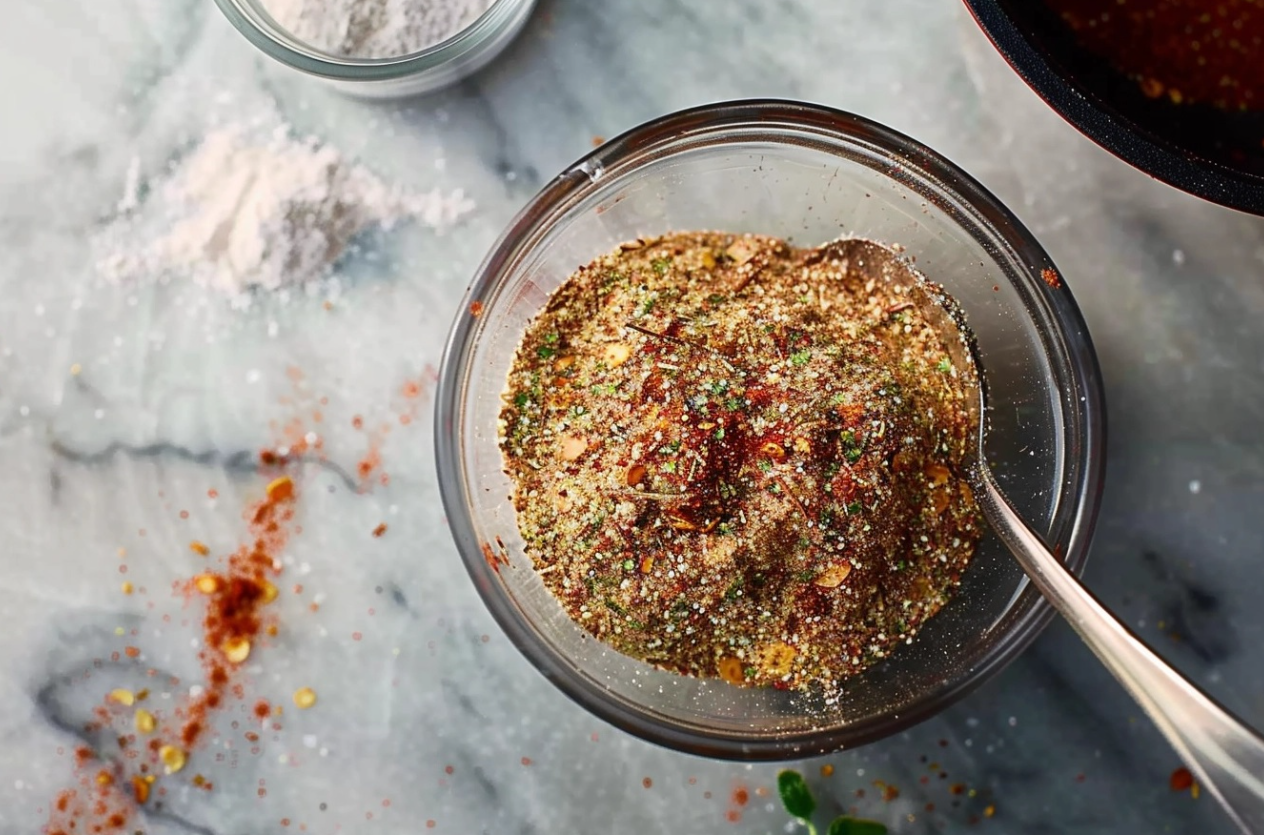
Storage and Maintenance Tips
Proper Storage Methods
To maintain the potency of your chili seasoning recipe, proper storage is essential. Safeguard your chili seasoning in an airtight receptacle to shield against air and moisture, preserving the integrity of the spices. Optimal containment is achieved with glass jars featuring secure lids. Additionally, maintain the vessel in a cool, shaded locale, avoiding direct exposure to sunlight and heat sources. This helps preserve the vibrant flavors and aromas of your chili seasoning.
Shelf Life and Freshness
Understanding the shelf life of your chili seasoning ensures you always use it at its best. When appropriately stored, homemade chili seasoning can endure for up to six months. However, for the freshest taste, it’s advisable to use it within three months. Prior to usage, always assess for indications of spoilage. If the mix has lost its vibrant color or strong aroma, it may be time to make a fresh batch.
Tips for Maximizing Freshness
To extend the life of your chili seasoning, consider the following tips:
- Store it in small batches to minimize exposure to air each time you use it.
- Exercise caution against employing damp or soiled utensils during dispensing.
- Date the container upon preparation to monitor its aging process.
Adhering to these storage and upkeep practices ensures the sustained freshness and potency of your chili seasoning. This way, you’ll always have a potent, delicious spice blend ready to enhance your culinary creations. Proper care of your chili seasoning not only preserves its quality but also maximizes the enjoyment of your dishes.
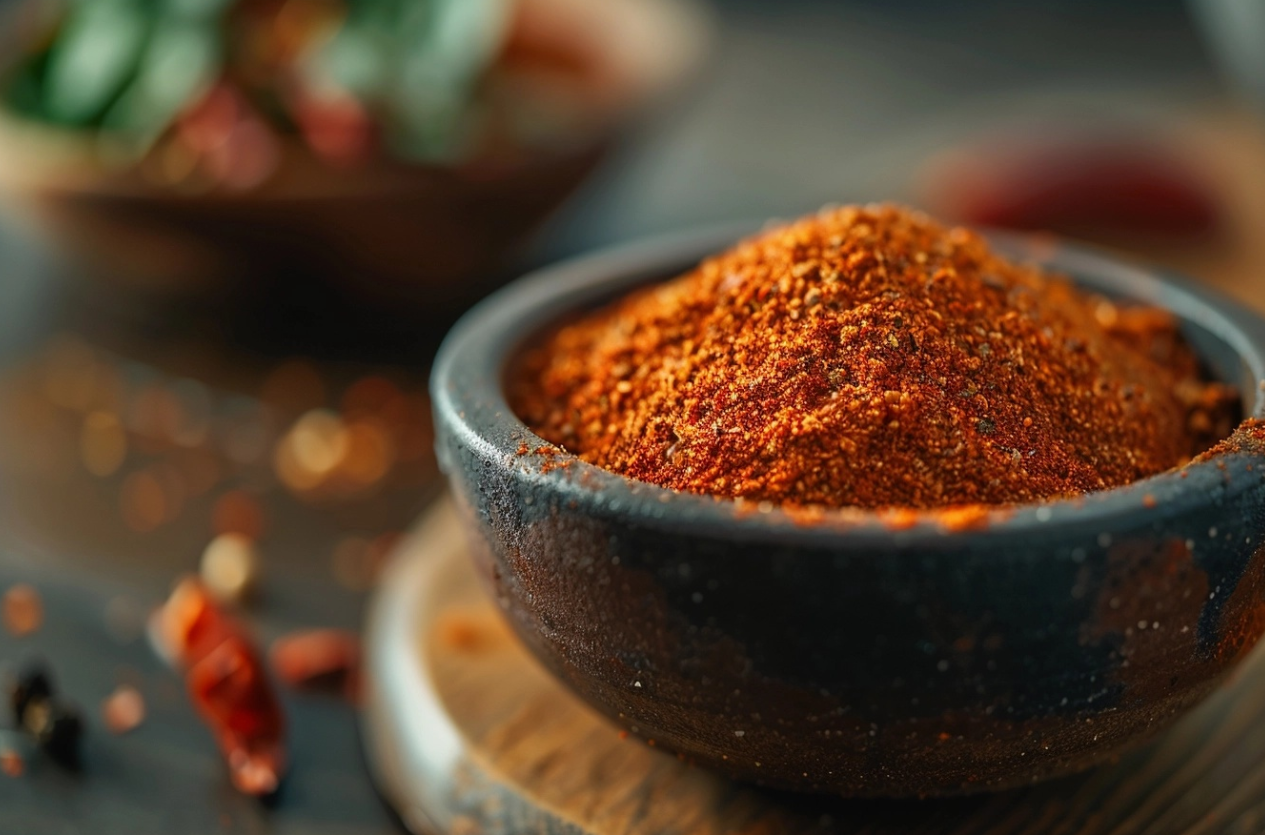
Dietary Adaptations
Making it Healthier
Adapting your chili seasoning recipe for a healthier lifestyle is straightforward. For a low-sodium option, reduce or omit the salt. You can enhance flavor with additional herbs like thyme or rosemary. Opt for organic spices to avoid pesticides and additives. Additionally, using chili seasoning in moderation can help manage dietary goals while still enjoying robust flavors.
Adaptations for Dietary Restrictions
Creating a chili seasoning blend that fits various dietary needs is easy with a few substitutions. For adherence to gluten-free dietary regimens, verify the gluten-free certification of all spices to prevent cross-contamination. For adherents of vegan lifestyles, verify the plant-based origins of all ingredients, devoid of animal byproducts.
If you need a low-sodium blend, replace salt with salt-free herb mixes or nutritional yeast for a savory boost. Additionally, if you’re following a keto or low-carb diet, ensure there are no hidden sugars in your spice mix. These adaptations enable the enjoyment of chili seasoning across diverse dietary preferences.
Customizing for Personal Preferences
Personalizing your chili seasoning can cater to individual tastes and health needs. For a milder rendition, reduce the quantity of hot chilies or substitute with sweet paprika. Alternatively, augment the spiciness by increasing the proportions of cayenne pepper or crushed red pepper flakes. Adjusting the ratio of cumin, garlic, and onion powders can also tailor the blend to your liking.
Moreover, experimenting with different herbs and spices, such as coriander or fennel seeds, can add unique flavors. These customizations not only make your chili seasoning more enjoyable but also ensure it aligns with your personal dietary requirements and preferences.
By making thoughtful adjustments, your chili seasoning can be both delicious and suitable for a variety of diets.
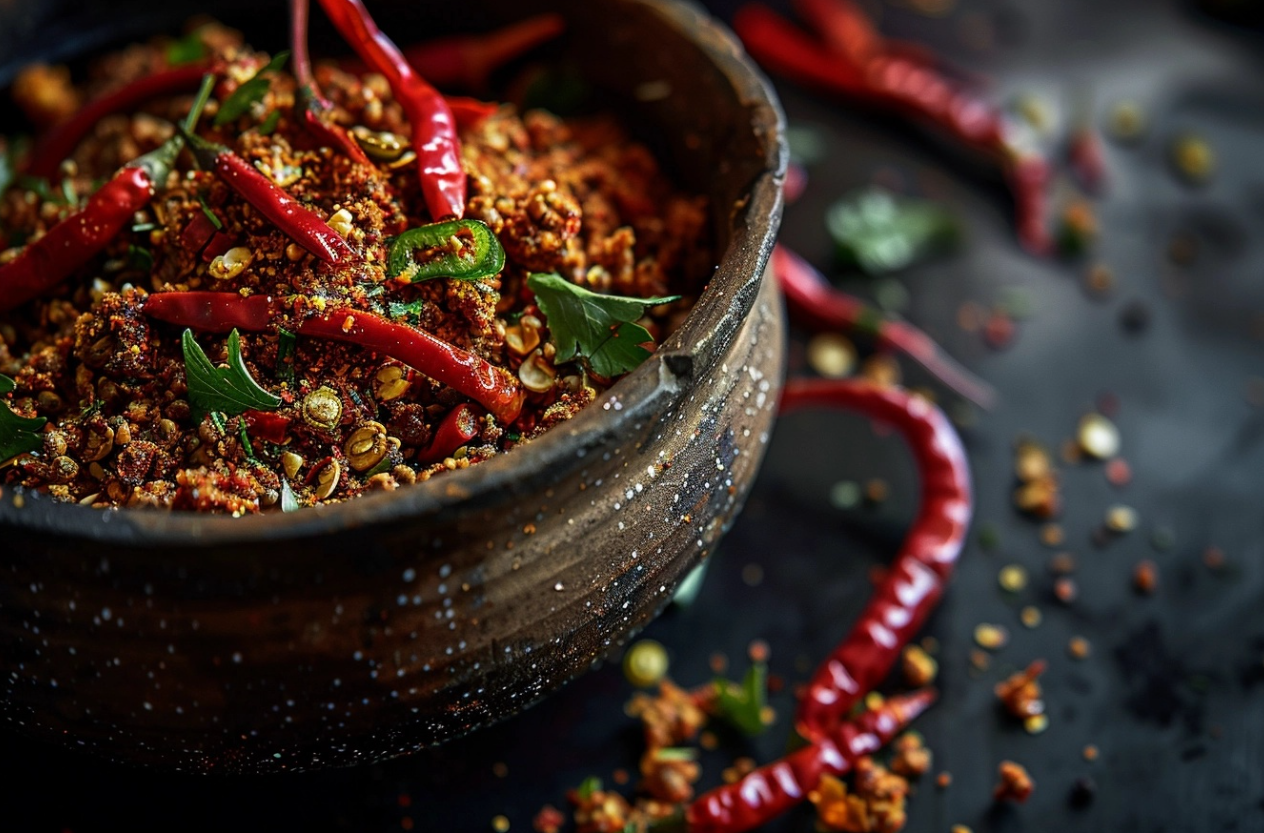
Frequently Asked Questions
Unveiling the constituents of chili seasoning.
Chili seasoning is typically made of a blend of spices. Typical constituents comprise chili powder, cumin in its ground form, garlic powder, powdered onion, paprika, oregano, salt, and ground black pepper. This amalgam of ingredients yields a versatile and flavorsome spice blend.
What Spices Taste Good in Chili?
Many spices can enhance the flavor of chili. Besides the basic chili seasoning ingredients, you might add:
- Smoked paprika for a smoky flavor
- Cocoa powder for depth
- Cinnamon for warmth
- Coriander for citrusy notes Experimenting with these spices can take your chili to the next level.
Unlocking the key to exceptional chili.
The secret to really good chili lies in balancing flavors and cooking techniques. Using fresh, high-quality spices ensures robust flavors. Blooming your chili seasoning in oil before adding other ingredients releases the spices’ essential oils, enhancing their flavor. Slow-cooking facilitates the harmonization of flavors, culminating in a sumptuous and savory dish.
Is Chili Powder Different Than Chili Seasoning?
Yes, chili powder and chili seasoning are different. Chili powder is typically made from ground dried chilies, and it may include a few additional spices like cumin. In contrast, chili seasoning is a blend of multiple spices, including chili powder, cumin, garlic powder, onion powder, paprika, and oregano, designed to add a comprehensive flavor profile to dishes.
Expert Tips and Tricks
For the best results, always use fresh spices. Stale spices can dull the flavor of your chili seasoning. Additionally, consider making your own chili powder by grinding dried chilies. This can provide a fresher and more vibrant base for your seasoning. Remember to store your chili seasoning properly to maintain its potency.
Addressing these common inquiries fosters a deeper comprehension of chili seasoning utilization and optimization.
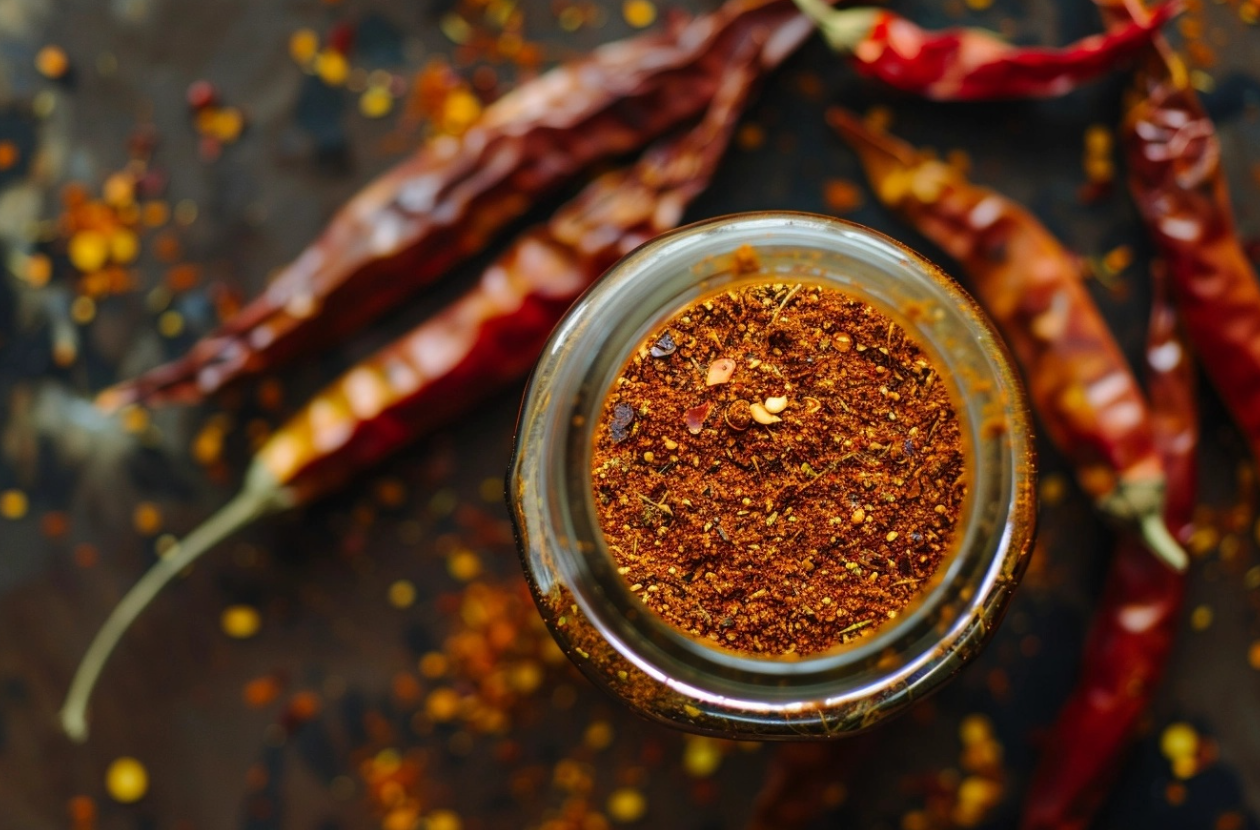
Conclusion and Final Thoughts
Summary of Key Points
Creating your own chili seasoning recipe at home offers both versatility and control over the ingredients. From understanding its rich history to mastering the basic recipe, you can tailor the blend to suit your tastes and dietary needs. By exploring a spectrum of flavors and culinary methodologies, one can ascend the culinary ladder with chili seasoning. Proper storage methods ensure that your chili seasoning remains fresh and potent, providing the best possible flavor for your dishes.
Encouragement to Experiment
The beauty of chili seasoning lies in its adaptability. Whether you prefer a mild blend or a fiery mix, you can adjust the ingredients to match your personal preference. Embrace the diversity of regional nuances and distinctive spice amalgamations. This exploration may unveil novel culinary horizons and delectable outcomes. With each batch crafted, refine culinary finesse and deepen understanding of spice synergies.
Final Words of Motivation
Using homemade chili seasoning not only enhances the taste of your food but also brings a sense of accomplishment. The personal touch of crafting the blend imparts a unique flair to every culinary creation. As you continue to explore the world of spices, your culinary creations will become more flavorful and sophisticated.
Furthermore, sharing homemade chili seasoning fosters conviviality and appreciation.A testament to culinary prowess, homemade seasoning showcases the benefits of artisanal blends. Whether concocting a casual supper or an elaborate banquet, chili seasoning promises a burst of flavor and comfort.
In conclusion, mastering the art of making chili seasoning is a rewarding endeavor. It offers endless possibilities for customization and culinary exploration. By following the tips and techniques outlined in this guide, you’ll be well on your way to creating a signature spice blend that enhances your dishes and delights your taste buds. Embark on a journey of flavor exploration, letting creativity shine in every culinary endeavor.
